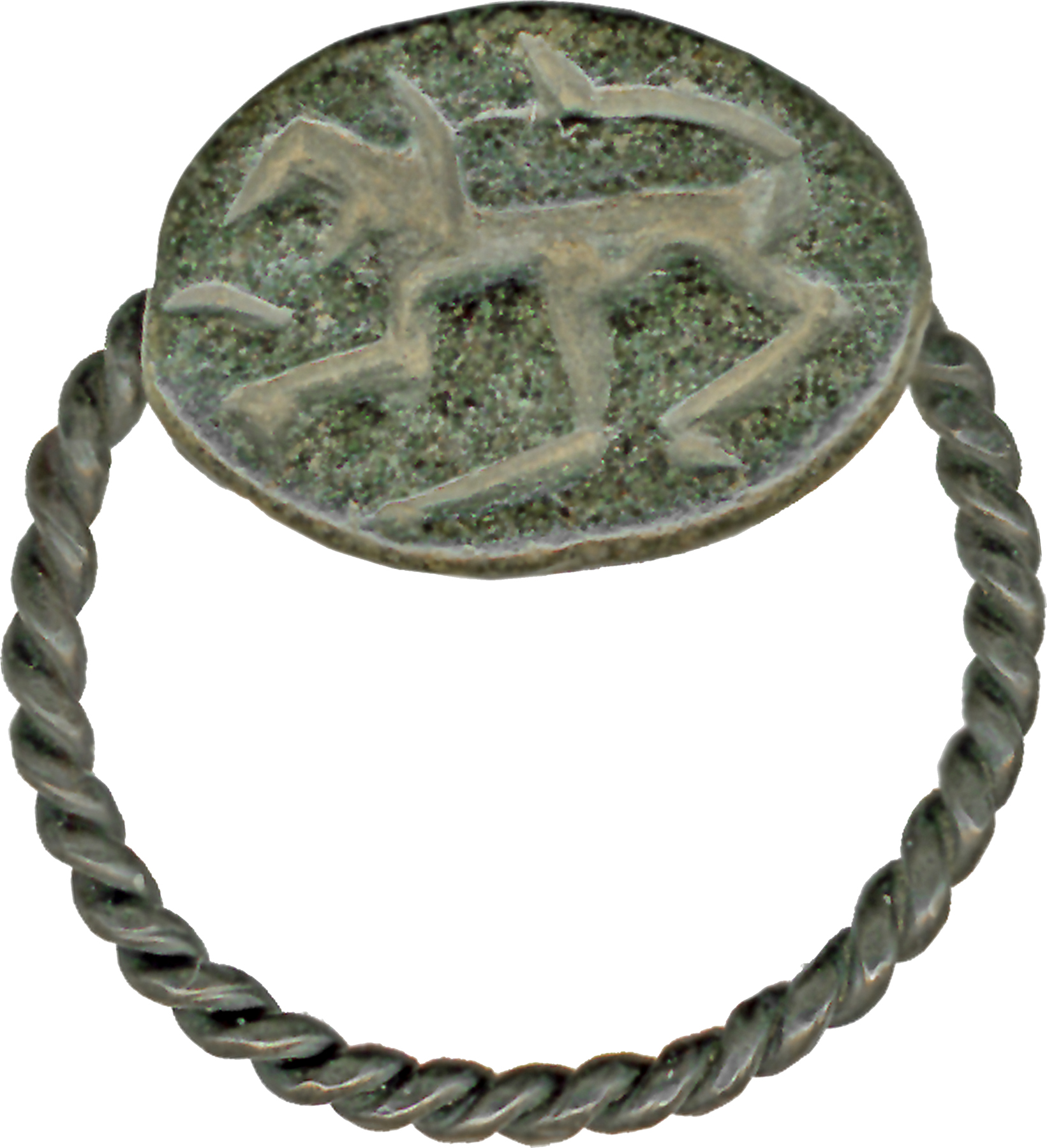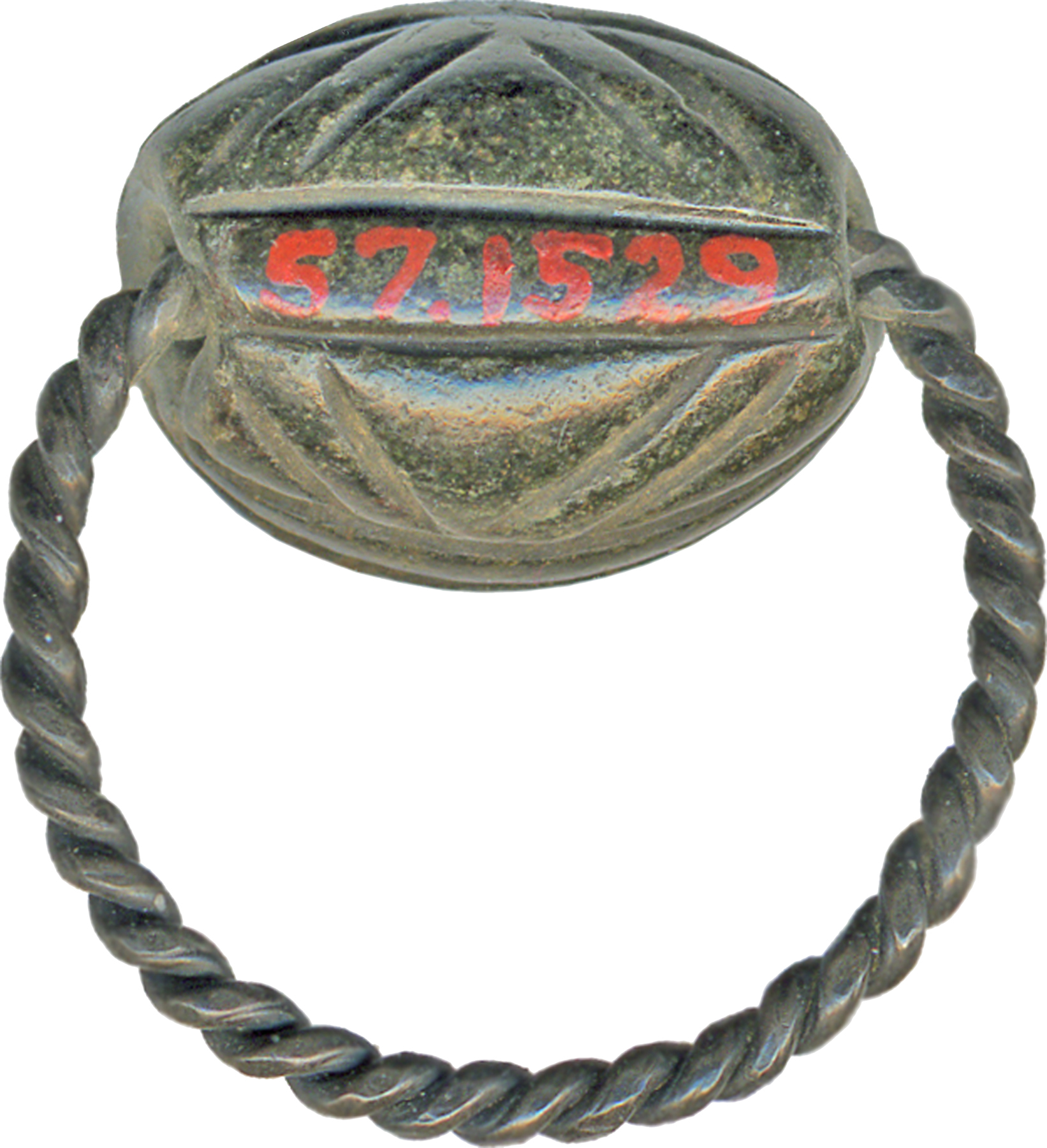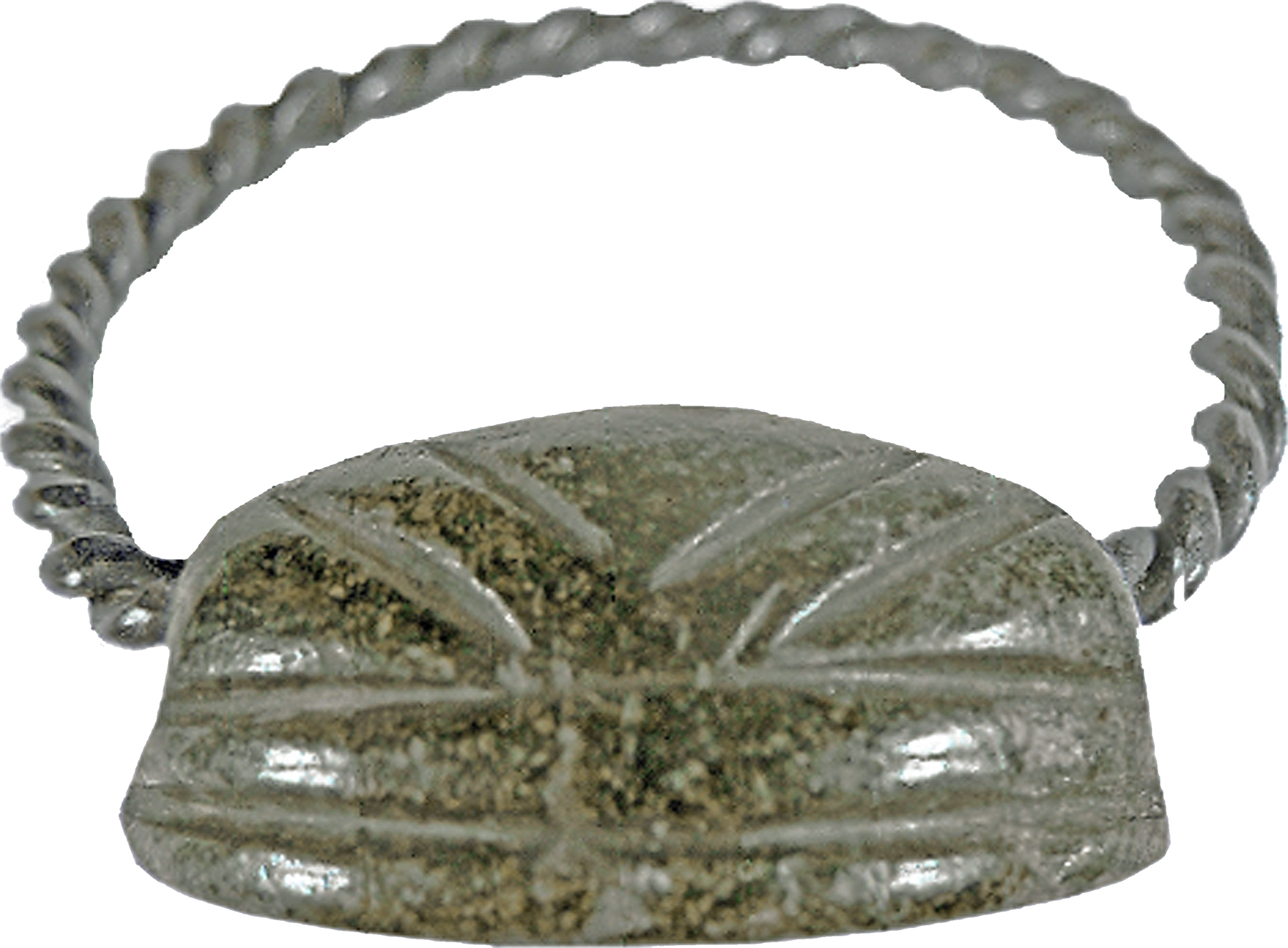Scaraboid with Icon of a Sphinx (?)
This steatite ovoid is incised with a horizontally arranged bottom design of a hawk-headed sphinx (?) with a long raised tail. The top displays a pattern with two central, parallel lines and two sets of 'V'-shaped lines on each side. The back and sides are not standardized, and the deeply incised lines vary slightly in depth and thickness. The layout of the top is balanced. The shape of the figure on the bottom is intentionally irregular. The different positions of the legs and open pick demonstrate the energy of the scene. The back is carefully made, and the bottom is more rough.
Objects such as this may have an amuletic rather than an administrative seal function. The amulet should secure divine/royal power, and provide magical protection for its owner.
The mammal motifs of Syro-Palestine ovoids represent usually antelopes, lions, unidentifiable quadrupeds, or fabulous creatures. This figure combines the body of a lion with a hawk head, and has to be identifed as sphinx. It combines divine and royal aspects, and therefore heavenly and earthly protection.
Provenance
Provenance (from the French provenir, 'to come from/forth') is the chronology of the ownership, custody, or location of a historical object. Learn more about provenance at the Walters.
Henry Walters, Baltimore [date and mode of acquisition unknown]; Walters Art Museum, 1931, by bequest.
Geographies
Near East (Place of Origin)
Measurements
H: 3/8 x W: 9/16 x L: 3/4 in. (0.9 x 1.5 x 1.9 cm); Inner Diam: 1 in. (2.6 cm); Outer Diam: 1 3/16 in. (3 cm)
Credit Line
Acquired by Henry Walters, 1929
Location in Museum
Not on view
Accession Number
In libraries, galleries, museums, and archives, an accession number is a unique identifier assigned to each object in the collection.
In libraries, galleries, museums, and archives, an accession number is a unique identifier assigned to each object in the collection.
57.1529








